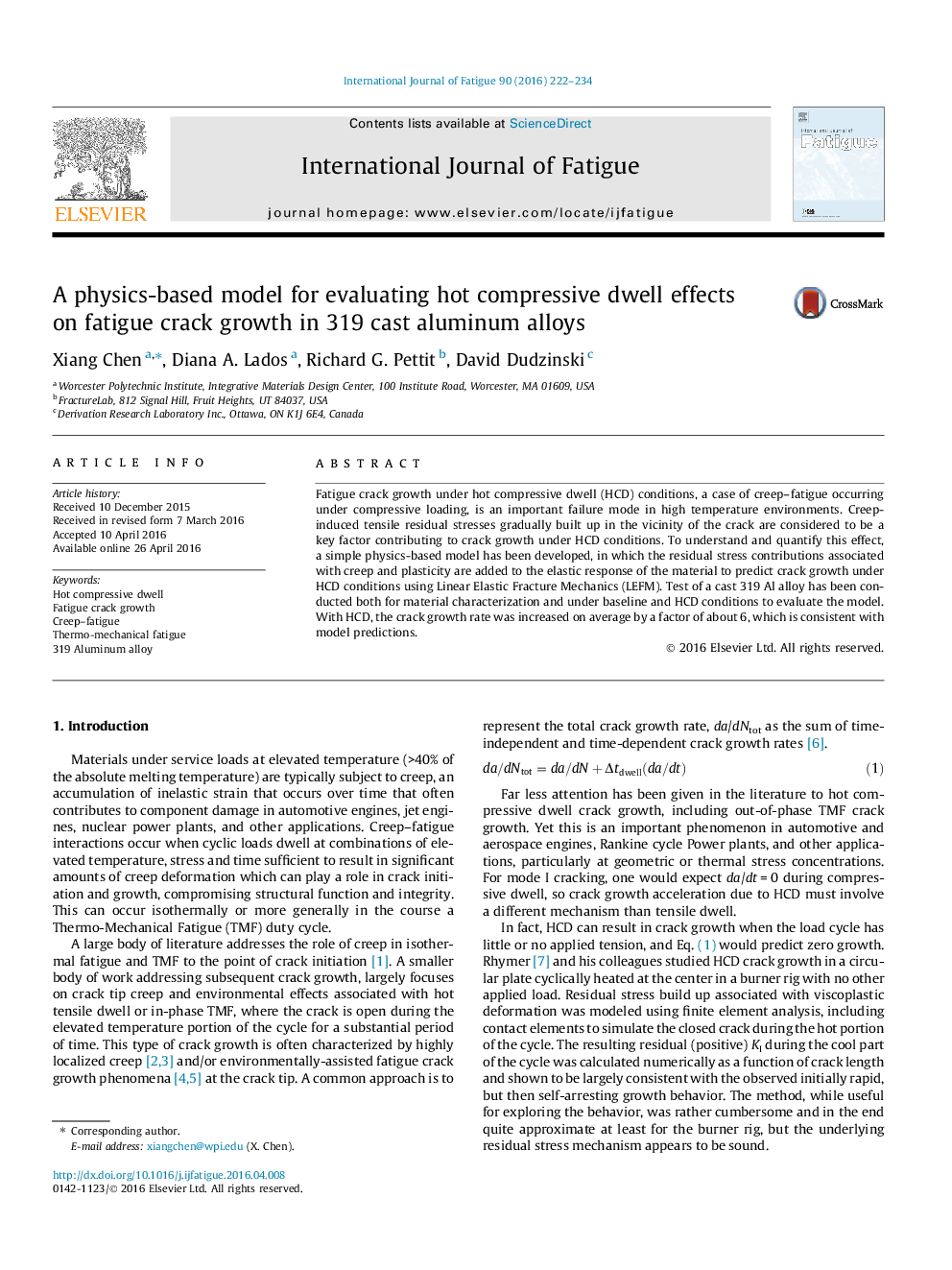| کد مقاله | کد نشریه | سال انتشار | مقاله انگلیسی | نسخه تمام متن |
|---|---|---|---|---|
| 776525 | 1463739 | 2016 | 13 صفحه PDF | دانلود رایگان |
• Crack growth acceleration due to hot compressive dwell (HCD) effects was observed.
• A physics-based model was built to predict HCD effects on crack growth behavior.
• Good agreement was found between model predictions and experimental results.
Fatigue crack growth under hot compressive dwell (HCD) conditions, a case of creep–fatigue occurring under compressive loading, is an important failure mode in high temperature environments. Creep-induced tensile residual stresses gradually built up in the vicinity of the crack are considered to be a key factor contributing to crack growth under HCD conditions. To understand and quantify this effect, a simple physics-based model has been developed, in which the residual stress contributions associated with creep and plasticity are added to the elastic response of the material to predict crack growth under HCD conditions using Linear Elastic Fracture Mechanics (LEFM). Test of a cast 319 Al alloy has been conducted both for material characterization and under baseline and HCD conditions to evaluate the model. With HCD, the crack growth rate was increased on average by a factor of about 6, which is consistent with model predictions.
Journal: International Journal of Fatigue - Volume 90, September 2016, Pages 222–234
